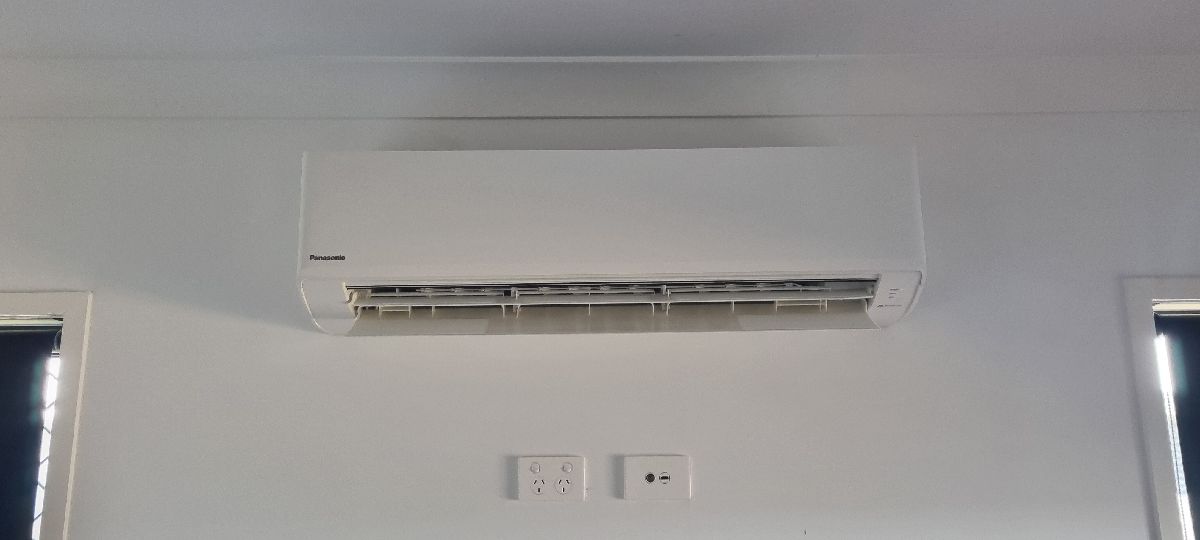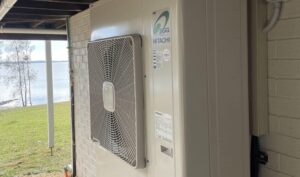When it comes to maintaining the ideal climate within your home, two popular options often come to mind: ducted air conditioning systems and split systems. Both offer unique advantages, but comprehending the distinctions between them is pivotal to making an informed choice that aligns with your specific requirements. In this comprehensive guide, we’ll delve into the differences between ducted and split system air conditioners, enabling you to make a well-informed decision to enhance your comfort in Forster and its neighboring regions.
Ducted Air Conditioning Systems
Overview
Ducted air conditioning systems, also recognized as central air conditioning, provide holistic cooling solutions for your entire home. They comprise a central unit connected to a network of ducts running throughout your residence. This system evenly disseminates cool air through vents located in each room, ensuring uniform and consistent cooling.
Advantages
- Whole-House Cooling: Ducted systems are ideally suited for larger residences or properties where maintaining consistent cooling across all rooms is paramount.
- Aesthetically Pleasing: Ducted systems are discreet, with only small vents visible in each room, contributing to an aesthetically pleasing environment.
- Quiet Operation: These systems operate quietly, preserving a tranquil indoor atmosphere.
- Temperature Control: You can establish individual temperature zones, affording you the ability to customize comfort in distinct areas of your residence.
Split System Air Conditioners
Overview
Split systems comprise two primary components: an indoor unit and an outdoor compressor. They are designed to cool specific areas or rooms within your home. The indoor unit is typically mounted on a wall and directly delivers cool air into the designated room.
Advantages
Energy Efficiency: Split systems are renowned for their high energy efficiency, as they cool specific zones, curbing energy wastage.
Installation Flexibility: They are simpler to install than ducted systems, making them a cost-effective choice in terms of installation.
Zone Cooling: Ideal for homes with varying cooling needs, as you can install multiple units in different rooms.
Cost-Effective: If you’re on a budget or have a smaller living space, split systems offer a cost-effective cooling solution.
Choosing the Right System for You
Factors to Consider
When faced with the decision of selecting between ducted and split system air conditioners, take the following factors into account:
- Home Size: Ducted systems are well-suited for larger homes, while split systems excel in smaller spaces or single rooms.
- Budget: Your budget will significantly influence your choice. Split systems are typically more budget-friendly upfront.
- Cooling Needs: Assess your cooling requirements. Do you necessitate whole-house cooling, or are specific rooms sufficient?
- Aesthetics: Reflect on the aesthetics of your home. Ducted systems offer a cleaner look, whereas split systems have indoor units on display.
- Energy Efficiency: Ponder long-term energy savings. Split systems are often more energy-efficient due to their ability to cool specific zones.
Conclusion
In the ongoing debate of ducted vs. split systems, there is no one-size-fits-all answer. Your decision should harmonize with your specific needs, financial constraints, and personal preferences. Given the diverse climate conditions in Forster and its neighboring areas, a meticulous assessment of your requirements is essential.
If you find yourself still uncertain about which system best suits your needs, seek counsel from an experienced air conditioning service provider in Forster. They can offer personalized recommendations and ensure a seamless installation, ultimately bestowing upon you the comfort you rightfully deserve.
Whether it’s ducted or split system air conditioning, the ultimate objective remains consistent: to establish a comfortable indoor environment for you and your loved ones.
Invest wisely in your home’s cooling system, and you’ll revel in years of comfort amidst the scenic beauty of the Forster region.



